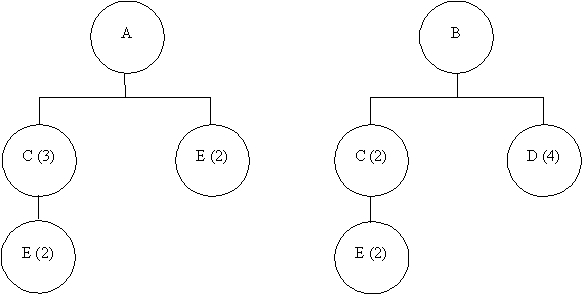The bill of material (BOM) for Products A and B are shown below followed by a table of inventory data (called Exhibit 1) . The master production scheduling (MPS) for A calls for 150 units of A to be completed in Week 4 and another 225 units to be completed in Week 5. End item A has a two-week lead time. The MPS calls for 400 units of B to be completed in Week 6. End item B has a one-week lead time.  Exhibit 1
Exhibit 1
____________________________________________________________________
-Using the data given in Exhibit 1, determine the projected on-hand inventory for Item C, beginning in Week 8.
Definitions:
Sunk Costs
Past expenditures that have already been incurred and cannot be recovered or altered by current or future actions.
Decision Making
Selecting a course of action from competing alternatives.
Avoidable Cost
Costs that can be eliminated if a particular decision is made, such as discontinuing a product or service.
Sunk Cost
A cost that has already been incurred and that cannot be changed by any decision made now or in the future.
Q5: The cost of quality refers to the
Q17: Define regression analysis and explain how it
Q25: The economic order quantity (EOQ) model follows
Q26: Which one of the following statements is
Q35: The standard deviation (not variance) of the
Q44: Income beneficiary Molly wants to receive all
Q49: Describe how supply chains should be designed
Q54: If activity C is delayed by 2
Q70: A doctor's office charges no-show patients $30
Q71: In designing process layouts, arrangement of departments